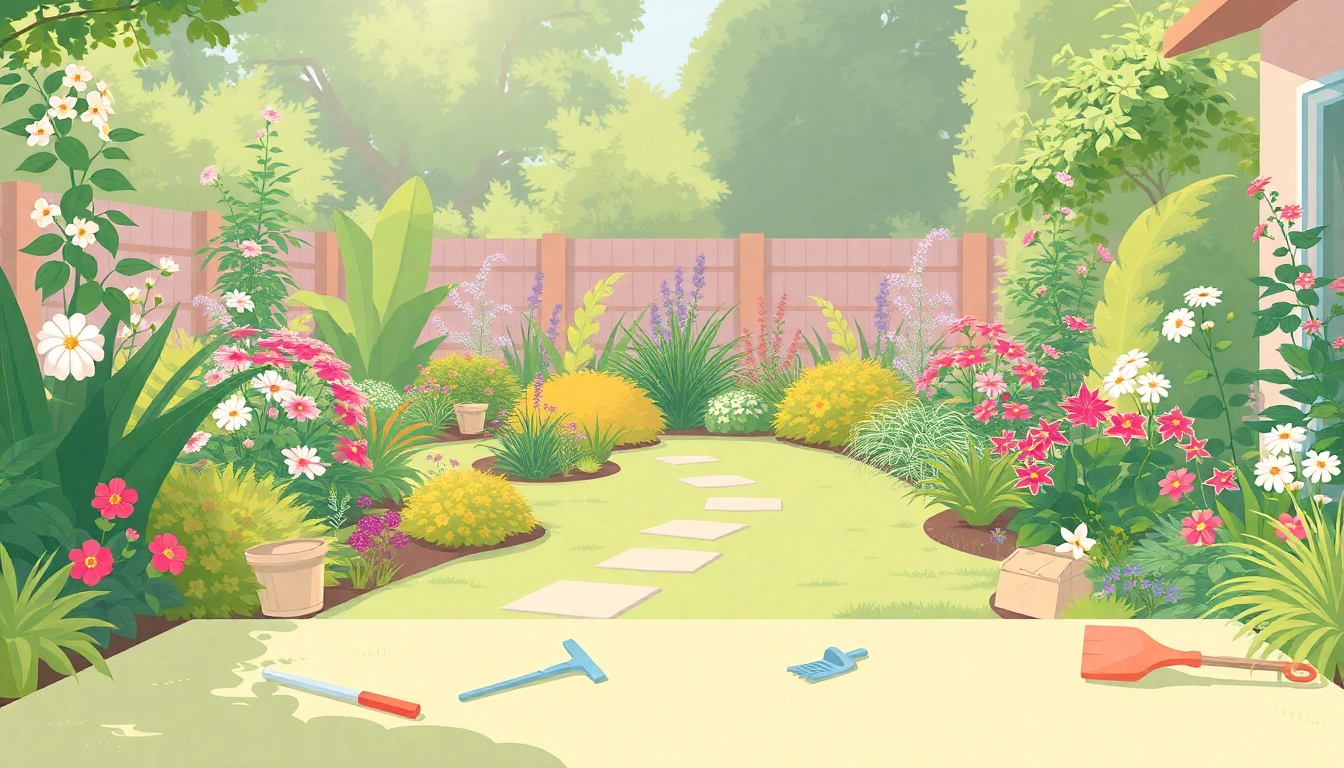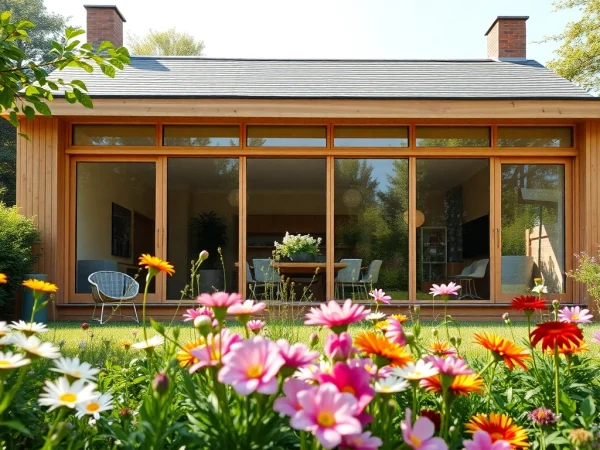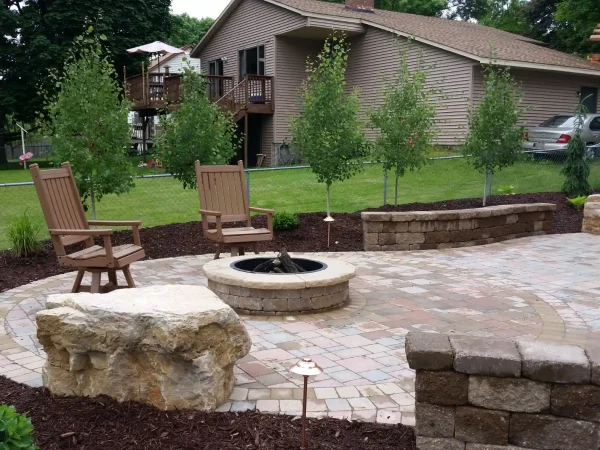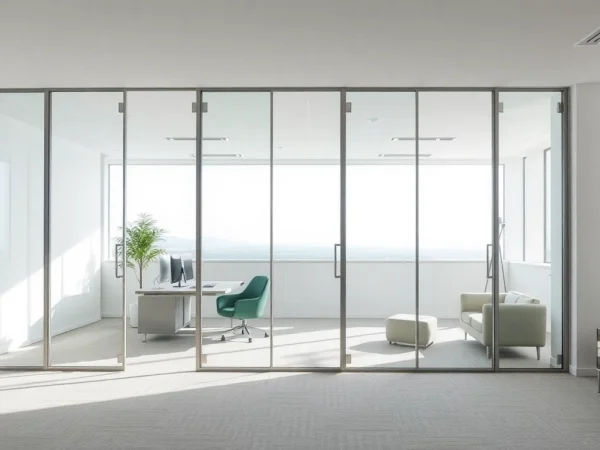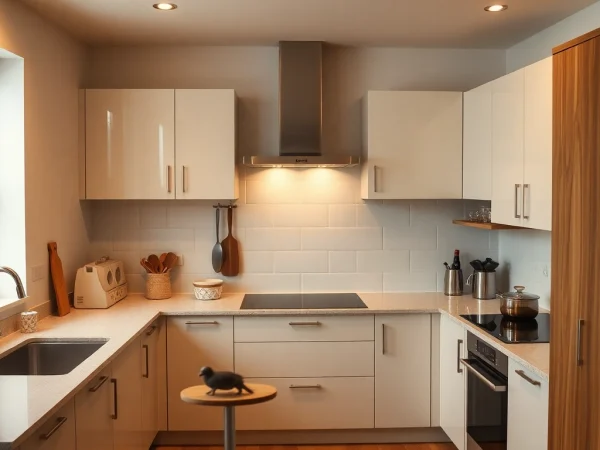Understanding Landscaping Company Pricing: What You Need to Know for Your Next Project
1. Overview of Landscaping Company Pricing
Understanding the intricacies of landscaping company pricing is essential for individuals and businesses embarking on landscaping projects. The costs associated with landscaping services can vary widely based on various factors, including the type of service required, the complexity of the work, and regional factors. In this section, we will delve into the main factors influencing landscaping pricing, the common structures used by landscaping companies, and the typical costs associated with different types of landscaping services.
a. Factors Influencing Pricing
Several factors can significantly influence the pricing set by landscaping companies. These include:
- Scope of Work: The size and nature of the project play a major role in determining cost. Larger or more complex projects typically require more time, labor, and materials.
- Materials Used: Quality and type of materials can drastically affect pricing. High-quality stones, plants, and soil can raise costs significantly.
- Labor Costs: The expertise and location of the workforce also matter. Highly skilled professionals or services in urban areas may demand higher wages.
- Seasonality: Landscaping projects are often subject to seasonal demand which can influence pricing. Demand peaks during spring and summer may lead to higher prices.
- Design Complexity: Unique and elaborate designs require specialized skills and planning, contributing to overall expenses.
b. Common Pricing Structures
Landscaping companies usually adopt various pricing structures to cater to their diverse clientele. Some of the most common structures include:
- Hourly Rates: For smaller projects or consultations, some landscapers charge an hourly rate, typically ranging from $50 to $150, depending on experience and location.
- Flat Rates: Many companies price services such as lawn mowing or yard clean-up at a flat rate, which can simplify billing for customers.
- Per Square Foot: For large landscaping projects like installations or sod laying, the cost is often calculated per square foot, with average rates fluctuating between $5 to $15 depending on the service.
- Package Deals: Some landscaping companies offer bundled services at a discounted rate, which can appeal to homeowners looking for comprehensive care like maintenance, design, and installation.
c. Typical Costs for Different Services
Understanding the typical costs associated with various landscaping services can help customers budget effectively. Here are some common services and their respective costs:
- Lawn Installation: Ranges from $1,000 to $5,000, depending on the size of the area and the choice of sod or seed.
- Landscape Design: Professional design services can cost between $50 and $150 per hour or upwards of $2,000 for complete designs.
- Tree Services: Tree removal can cost $200 to $1,800, depending on the tree size and complexity of the job.
- Irrigation Installation: Installing an irrigation system can range from $1,500 to $3,500 based on the property size and layout.
- Regular Lawn Maintenance: Basic lawn care services can cost $100 to $300 per month, depending on the frequency and type of service.
2. Analyzing Landscaping Quotes
When seeking professional landscaping services, understanding how to analyze and compare quotes can save you both money and headaches. In this section, we will discuss how to request accurate quotes, break down the components of a quote, and evaluate different offers effectively.
a. How to Request Accurate Quotes
To obtain an accurate and comprehensive quote from landscaping companies, consider the following steps:
- Define Your Project: Clearly outline the scope of your landscaping project, including desired services and timelines.
- Request Detailed Bid Proposals: Ask for itemized quotes that detail labor, materials, and any other costs associated with the project.
- Provide Site Access Information: Giving landscapers access to your property allows them to assess the site and identify potential challenges more accurately.
- Ask About Permits: If your project requires permits, ensure that the quote includes costs related to obtaining necessary approvals.
b. Breaking Down a Quote
Understanding the breakdown of a landscaping quote will help you identify what you are paying for and ensure transparency:
- Labor Costs: Analyze how much of the quote is attributed to labor hours and the hourly rate charged.
- Materials Cost: Check the types and quantities of materials listed to ensure they match your expectations and are of quality standard.
- Overhead Charges: Some quotes may include overhead or administrative costs; ask for clarification if these fees seem inflated.
- Contingency Fees: Inquire whether the quote includes contingency fees for unforeseen conditions during the project.
c. Comparing Different Offers
Once you acquire multiple quotes, comparing them can help you make an informed decision. Consider the following approaches:
- Value vs. Cost: Do not solely focus on the lowest price; evaluate what services and quality are included in each quote.
- Check References and Reviews: Research the reputation of the companies providing quotes, looking for customer reviews and testimonials.
- Assess Experience: More experienced landscapers may charge more but can offer better expertise and results.
- Follow-Up Questions: Feel free to reach out to contractors with additional questions to understand better their proposals before making any commitments.
3. Regional Variations in Pricing
The pricing of landscaping services can vary significantly depending on geographic location. This section explores the differences in pricing across regions, the impact of local regulations, and economic conditions affecting landscaping prices.
a. Cost Differences Across Regions
Regional variations can be attributed to several factors including cost of living, labor market conditions, and demand for landscaping services. For instance:
- Urban vs. Rural Areas: Urban areas often have higher costs due to the elevated cost of living and increased demand for landscaping services, compared to rural areas where prices may be lower.
- Climate Considerations: Areas with longer growing seasons or harsher climates may require more intensive landscaping efforts, impacting pricing.
- Local Market Demand: Regions with a booming real estate market may witness increased competition for landscaping services, driving prices higher.
b. Influence of Local Regulations
Local regulations on landscaping can also affect costs. Consider the following points:
- Zoning Laws: Some areas may have strict zoning or land use codes that outline what types of landscaping are permissible, potentially adding to costs.
- Permit Requirements: Certain heavy landscaping projects might necessitate permits, which can add administrative and delay costs to a project.
- Sustainability Regulations: Local policies promoting native plants or sustainable landscaping practices can affect plant selection and installation costs.
c. Economic Factors Affecting Pricing
Current economic conditions can have a direct impact on landscaping pricing:
- Economic Growth: A growing economy typically increases demand for landscaping services, which can lead to higher prices.
- Inflation Rates: Rising inflation impacts the cost of materials, labor and overhead, which can consequently increase service prices.
- Supply Chain Fluctuations: Disruptions in the supply chain can lead to shortages in materials, further driving up costs for landscapers and their clients.
4. Cost-Saving Tips for Landscaping Projects
While investing in landscaping can enhance property value and aesthetics, there are ways to manage costs effectively without compromising quality. This section provides actionable cost-saving tips for your landscaping projects.
a. DIY vs. Professional Services
Determining when to tackle a landscaping project yourself or hire professionals can significantly impact your overall budget:
- DIY Projects: For simpler tasks like planting flowers or spreading mulch, DIY can save you money. However, ensure you have the knowledge and tools before diving in.
- Hiring Professionals: For complex designs or installations, it’s often best to invest in professional services to ensure the job is done right.
- Combining Approaches: Consider a hybrid approach where you handle specific aspects and hire professionals for larger installations.
b. Timing Your Landscaping Work
Certain times of the year can lead to cost savings on landscaping projects:
- Off-Season Discounts: Scheduling work during off-peak seasons (late fall or winter) can result in lower prices due to decreased demand.
- Pre-Season Deals: Some landscaping companies offer discounts for booking services ahead of peak seasons.
- Project Timing: Timing your project to avoid holidays or busy seasons can help you negotiate better deals with landscapers eager for business.
c. Choosing Budget-Friendly Materials
Selecting cost-effective materials does not mean sacrificing quality. Here are some budget-friendly tips:
- Local Sourcing: Purchase materials from local suppliers to save on shipping costs and ensure freshness.
- Alternative Options: Research alternative materials that offer a similar look but are less expensive, such as using high-quality synthetic lawns instead of natural sod.
- Seasonal Plants: Use seasonal flowers and plants that are native to your region, as they often require less maintenance and are less costly to establish.
5. Evaluating Value Beyond Price
While price is often the primary concern when selecting a landscaping service, other factors contribute significantly to the overall value. In this section, we discuss the importance of quality in landscaping, the long-term benefits of professional services, and building relationships with landscaping companies.
a. Importance of Quality in Landscaping
Investing in quality landscaping services can lead to greater long-term satisfaction and lower maintenance costs:
- Longevity of Materials: Higher quality materials not only enhance aesthetics but also withstand wear and tear over time, reducing the need for frequent replacements.
- Expertise and Design Skills: Experienced landscapers bring valuable insight, ensuring aesthetic appeal and functionality, which might exceed initial expectations.
- Proper Installation: Correct installation techniques can help prevent problems related to drainage, erosion, and plant survival, which can be costly to rectify later.
b. Long-Term Benefits of Professional Services
Investing in professional landscaping can pay off in several ways:
- Increased Property Value: Well-designed and executed landscaping can enhance curb appeal and increase property resale value by up to 14%.
- Time Savings: Professional services can save homeowners time, as they are equipped to complete projects faster and more efficiently.
- Sustainability Practices: Professionals often implement sustainable practices that lead to reduced water usage and long-term cost savings on utilities.
c. Building Relationships with Landscaping Companies
Creating a good relationship with your landscaping company can lead to improved service quality and cost savings:
- Communication Opportunities: Establishing clear lines of communication can ensure that your needs and expectations are understood, leading to better results.
- Loyalty Programs: Many landscaping companies offer loyalty programs or discounts for returning customers, enhancing overall value for contracted services.
- Customized Service Packages: Long-term relationships enable landscapers to better understand your preferences, which can lead to tailored solutions that can save you money over time.
